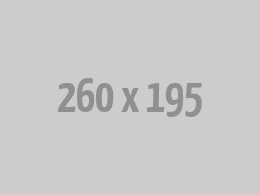Introduction
Today, like most other days in any given month, I learned something new. But this tidbit of knowledge was particularly intriguing and, in my experience, not something that is well-known among web devs and SEO experts.
So I thought to myself, on the off chance that I haven't been living under a rock this whole time, why not pen a short piece and spread the word?
Hopefully, by now, I've piqued your curiosity a bit. So without further ado, let's explore what I have christened, the 50,000px Rule.
High-Level Overview
I recently became aware of this information while completing a Google Codelab on JSON-LD structured data. While a bit off-topic from my objective, some of the related verbiages caught my attention. Let's have a look!
"For best results, provide multiple high-resolution images (minimum of 50K pixels when multiplying width and height) with the following aspect ratios: 16x9, 4x3, and 1x1."
--Google Search Central
So basically, what Google is trying to say here is this. If this expression doesn't return true after plugging in the dimensions of your photos, then your site isn't serving high-resolution imagery.
<span>imgW * imgL >= sqrt(50,000)</span>
Let's simplify the math just a tad. We know that (2 x2 =4), so let's assign these values to a simple square. Using the formula for a given square area, we can determine a 2in x2in square has a surface area of...surprise! Four square inches.
Now we must realize this calculation does not change based on the unit of measurement. If we instead had a 2-foot square or a 2-cm square, the unit of measure being used won't alter the actual values.
So then, is a pixel also a unit of measure? Of course! Pixels, abbreviated as "px," are a tiny unit of measure; one pixel is about 1⁄96 inch (0.26 mm).
While small, these specks do play an essential role in web design. Pixels are used to make sure a given element will render no matter what screen resolution is used for viewing.
Practical Application
Getting back to the 50,000px Rule, we should find the concept seems much simpler now. To meet the minimum requirements for a high-resolution image, a photograph just needs to have a square area of at least 50K pixels.
Let's calculate what this means using three aspect ratios widely recommended as variants of any image we might serve on a webpage.
- 1:1 - the basic square or thumbnail image
We should be familiar by now with this type of calculation. After taking the square root of 50,000, we discover the minimum size for a high-resolution photo with a 1:1 ratio.
- 4:3 - the nostalgic "Academy ratio" used in older films
Once the shape changes from a square to a rectangle, the calculation process becomes less granular and involves ratios and fractions.
- 16:9 - the current "widescreen" cinematic standard
As you might assume, the larger the base ratio, the larger the gap between 50,000 and the actual size of our image. With a 16:9 aspect ratio, we cannot get closer than 51,984 square pixels without using decimal numbers.
Conclusion
So there you have it, folks, the 50,000 Rule demystified. Now I do not anticipate any developer, not even myself, will need to reference this information very often.
Still, it was fun to research and it also sets a concrete baseline for high-resolution imagery. I hope that you enjoyed reading this article and perhaps you have also learned something new today!
"For an image to be considered high-resolution when served on the Web, it must satisfy the 50,000px Rule."
Don't forget to 💖 this article and leave a 💭; I look forward to reading your thoughts and opinions in the comments below. If you're feeling extra generous, please click my name below to 🎆subscribe🎇!
-- killshot13












Top comments (1)
i was looking for this, very well explained. Thanks!